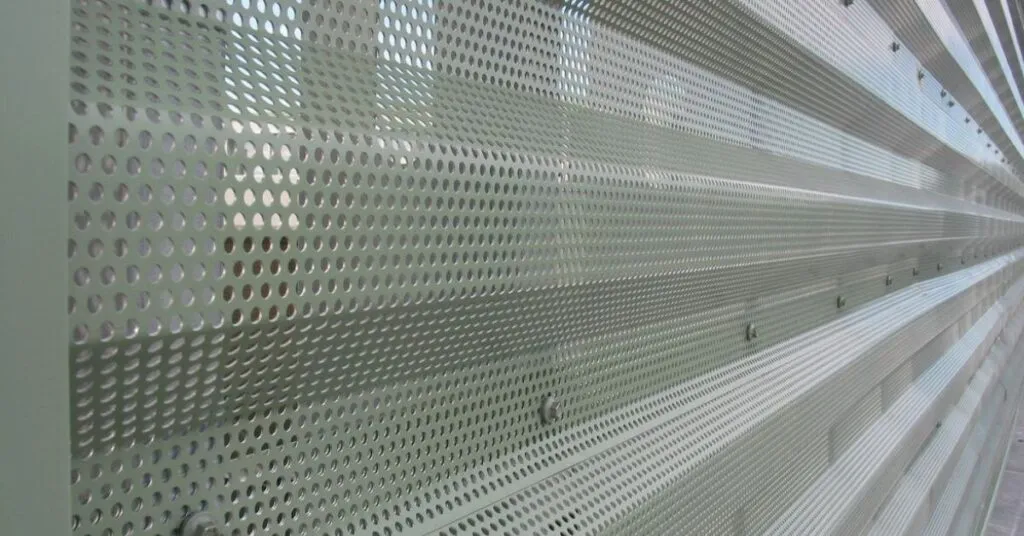Plywood Redefined: Perforated Panels for Contemporary Interiors – Regarding interior design, plywood has long been a versatile and reliable material. However, a new player has emerged in contemporary interior design – perforated panels. These innovative panels are redefining how interior designers and architects approach modern spaces. This article will explore how perforated plywood panels transform interiors, offering functionality, aesthetics, and endless design possibilities.
Table of Contents
The Versatility of Plywood
Plywood has been a staple in construction and interior design for decades. Its layered composition, with alternating grains in each layer, gives it remarkable strength and stability. Plywood is structurally sound and a sustainable choice, often made from renewable wood sources. Its versatility has made it a go-to material for various applications, from furniture to wall coverings.
Perforated Panels: A Modern Twist
Perforated panels take traditional plywood to a whole new level. These panels are created by strategically perforating plywood sheets with small holes or patterns. The perforations can vary in size, shape, and density, allowing designers to achieve various effects. Perforated panels come in different wood species, finishes, and thicknesses, offering endless design possibilities for contemporary interiors.
Visual Appeal
Perforated panels introduce a visually captivating element to interior spaces. The patterns created by the perforations add depth, texture, and character to walls, ceilings, and even furniture pieces. Depending on the size and density of the perforations, these panels can create an intriguing play of light and shadow, adding an element of dynamism to the space.
Acoustic Benefits
One significant advantage of perforated panels is their acoustic properties. The tiny holes in the panels help absorb sound, reducing echo and noise levels in a room. This makes them ideal for open-plan offices, restaurants, theatres, and residential spaces where noise control is crucial.
Airflow and Ventilation
Perforated panels can function in interiors by allowing airflow and ventilation. These panels can be strategically placed in kitchens, bathrooms, or commercial facilities to provide adequate ventilation without compromising aesthetics. This makes them a practical choice for modern living spaces.
Privacy and Partitioning
In contemporary interior design, open-plan layouts are prevalent, but there are times when privacy or separation is required. Perforated panels can be used as partitions or room dividers to create designated areas within a space. They offer a sense of enclosure while allowing visual connection and airflow.
Lighting Integration
Perforated panels can be creatively integrated with lighting to produce stunning visual effects. Backlit perforated panels can transform a wall or ceiling into a captivating focal point, casting intricate patterns and warm ambient lighting. This interplay of light and perforations adds a touch of elegance and sophistication to the interiors.
Customization
One of the most appealing aspects of perforated panels is their customisation options. Designers and architects can collaborate with manufacturers to create bespoke perforation patterns that align with a space’s overall design concept. This level of customization ensures that the panels seamlessly integrate into the interior design scheme.
Sustainability
Sustainability is a growing concern in interior design and construction. Many perforated panels are crafted from sustainably sourced plywood, making them an eco-friendly choice. The panels can also be recycled or repurposed, reducing waste and promoting a more sustainable design approach.
Durability
Just like traditional plywood, perforated plywood panels are durable and long-lasting. They can withstand daily wear and tear, making them suitable for high-traffic areas. Proper maintenance ensures that these panels remain in excellent condition for years.
Conclusion
Perforated panels have ushered in a new era of contemporary interior design, offering a unique blend of aesthetics and functionality. Whether used as decorative wall coverings or partitions or integrated with lighting, perforated panels have become a go-to choice for interior designers and architects seeking innovative solutions for contemporary interiors. With their endless design possibilities and sustainability benefits, it’s clear that perforated panels are here to stay, shaping the future of interior design one hole at a time.


